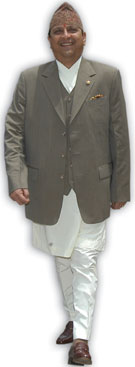|
|
King Gyanendra has little to do these days, and spends most of his time at Nagarjun palace. But the king and the monarchy still seem prominent in the national political centre, the latter being the top agenda in the ongoing peace process.
After Jana Andolan II, only Koirala is openly talking about a role for the monarchy. Even staunch royalists, former panchas, the RPP and Jana Shakti Party haven't been able to raise the issue.
After nearly 238 years of the Shah regime, the fate of the monarchy now rests with the people. There are people who favour the king, but there is no sign of any group lobbying hard to save him.
There are fears that the army, despite changing from the 'RNA', remains loyal to the king. But senior army officials deny having anything to do with the royal move of 1 February. They allege that the king simply uses the army as his weapon. "The army will no longer be used just because the king wants it to be," says a senior general. There will no coup with the army's help, he said. The question is how did the royal institution come to such an end after over two centuries?
The Nepali royal institution has so far left no positive stamp besides the country's unification by King Prithbi Narayan Shah. But many argue that the Shah king did this merely to establish his own regime. Only King Birendra was considered relatively liberal following his understanding with the political forces during the 1990 people's movement. After his death, the tradition of worshipping the king as god has also withered away.
When King Gyanendra took over, he promised peace but ended up militarising Nepal. In addition, he jeopardised his own goodwill by ignoring foreign leaders' appeals to work in harmony with the parties.



